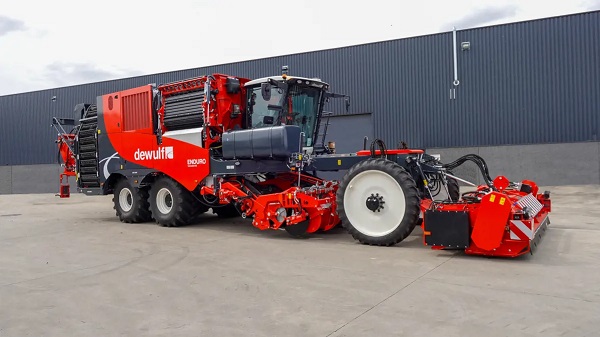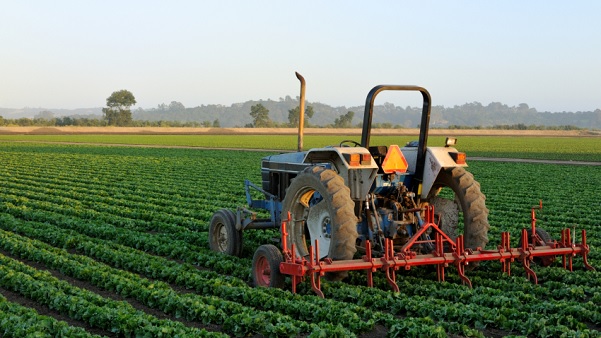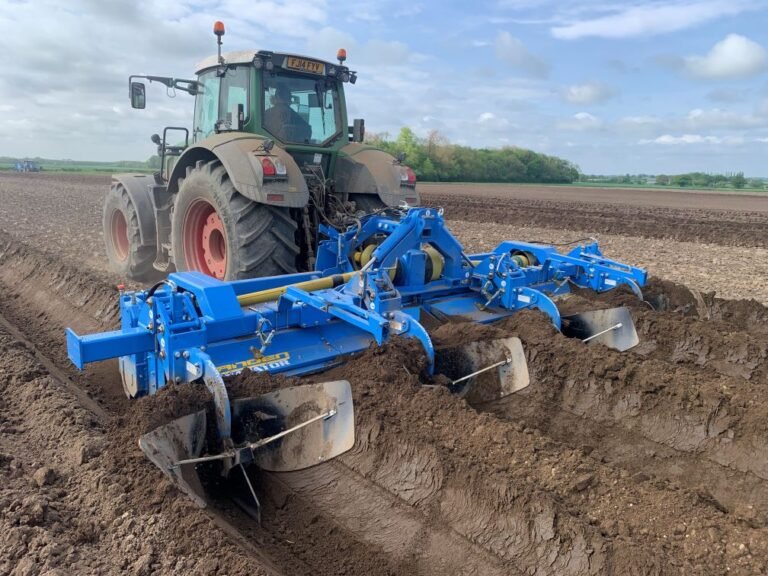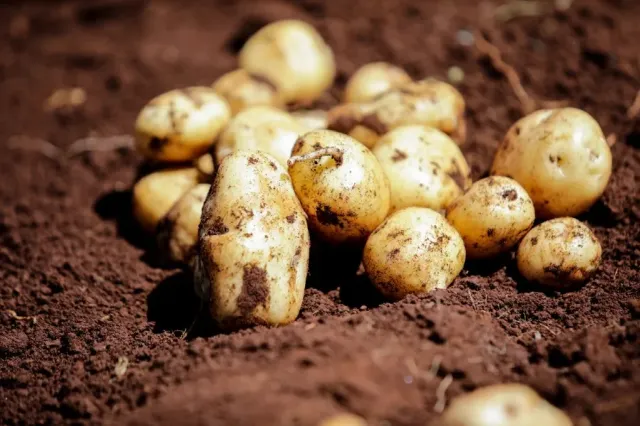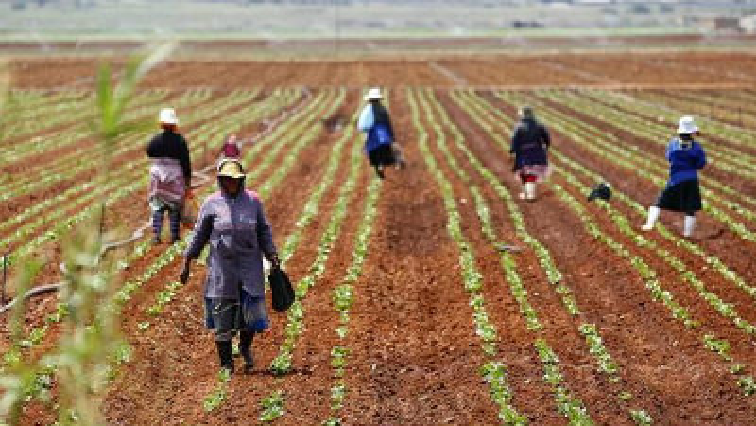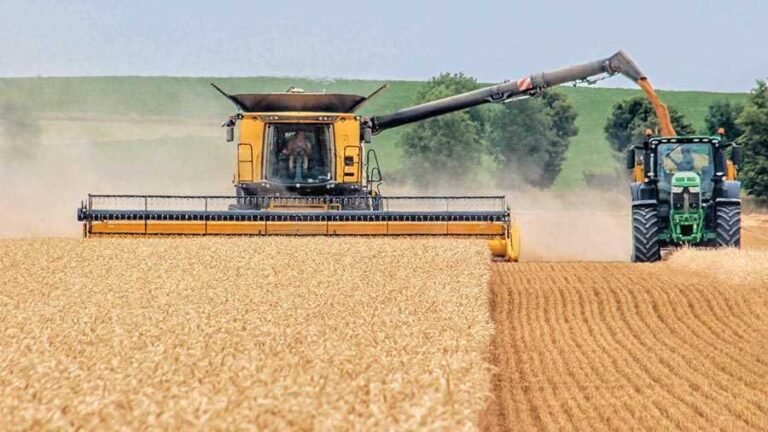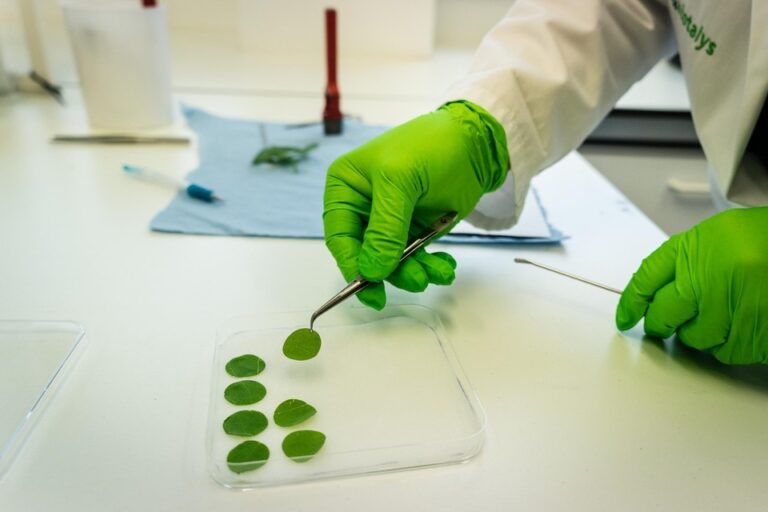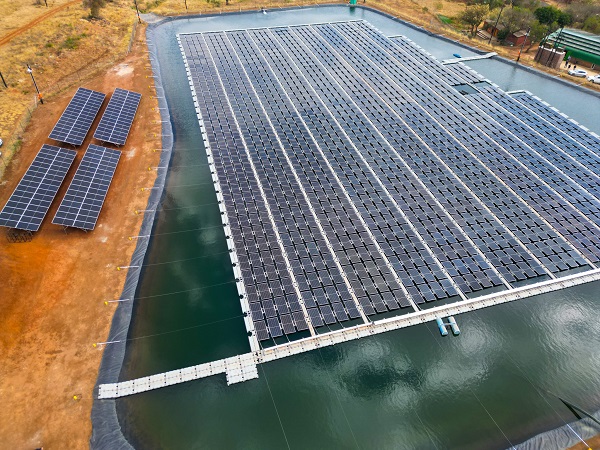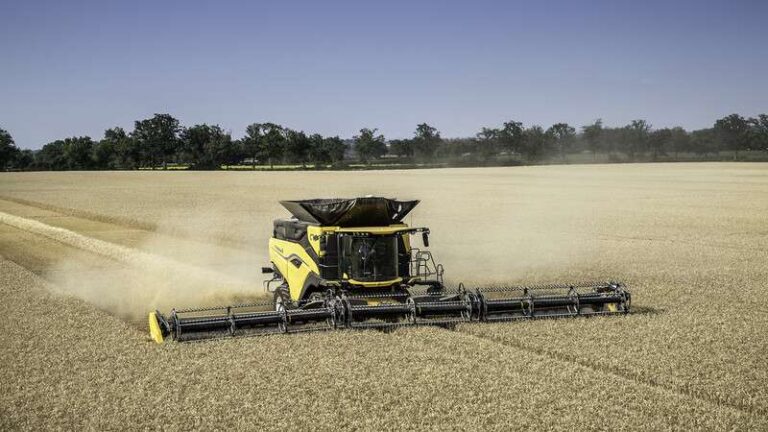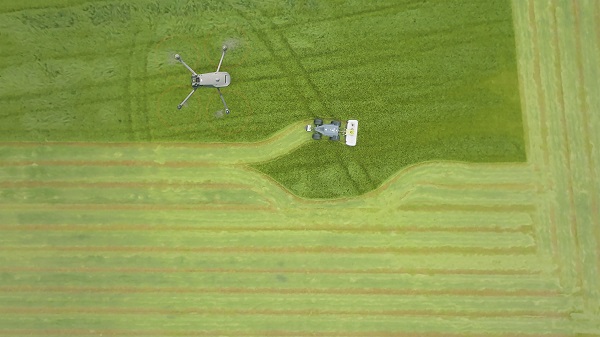One of the most renowned European potato fairs will set up camp in Villers-Saint-Christophe (Aisne, France) in 2024.
Halfway between Lille and Paris, the 18th edition of Potato Europe will take place on 11 and 12 September, with Dewulf as a prominent participant.
At stand no. B 090-98 and during various demonstrations, Dewulf will showcase an extensive range of machines from its full-line offering to the stakeholders attending from the potato industry.
Second-generation Enduro takes it up a notch
Since the launch of the new generation Enduro, the 22-hectare demonstration site in France will be the first venue where the upgraded 4-row sieving harvester will showcase its capabilities to the general public.
The self-propelled harvester will make its debut configured for a row distance of 4 x 90 cm.
The 4-row harvester is equipped with a newly designed ring elevator, which boasts an increased processing capacity. The combination of larger bag volume, higher running speed and more optimal product distribution have boosted the capacity by around 50%.
The external changes to the Generation 2 machine are characterised by a new look and feel, with fewer covers, a redesigned main frame, and a larger, anthracite-coloured fuel tank.
The machine that will be demonstrating at Potato Europe is equipped with an Easy-Clean cleaning module, which features a continuously adjustable inclination angle of between 0 and 12°. This is an undeniable advantage, especially on sloping fields.
Moreover, with its 2-part bunker that provides a convenient 12.3 m³ capacity, the 4-row machine claims the title as largest in its market segment.
In terms of (lowest) ground pressure (max. 1.8 kg/cm²), Dewulf’s self-propelled harvester also tops the list.
The Enduro, though a tyre-mounted harvester, delivers unmatched traction even in the most demanding conditions. Finally, in its second generation, the machine remains extremely low threshold for drivers thanks to its ergonomics and tremendous ease of use in the cabin.
RA stands for proven quality
Dewulf completes the harvesting demonstrations with the popular 2-row self-propelled RA3060 harvester and a trailed RA2060, both at 2 x 90 cmrow distance.
These 2-row harvesters are equipped with one haulm roller, three sieving webs and an Easy-Clean cleaning unit. Since 1989, Dewulf has been manufacturing 2-row self-propelled harvesters on three wheels, always with a focus on superior end-product quality and maximum productivity under all conditions.
The established standard among harvesters distinguishes itself from the rest with impressive manoeuvrability and the power to continue harvesting where others are forced to stop.
With a 5th generation of this machine, the R3060 has certainly earned its stripes through the countless hours it has clocked up.
The trailed RA2060 variant is equipped with an unloading-on-the-move bunker with a 10.7 m³ capacity. The R2060 also has the largest tyre size in its class, keeping ground pressure to an absolute minimum.
This high-performing offset harvester also prioritises ease of use, product care throughout the process, and maintaining high potato quality.
After harvesting comes storage
After harvesting, the product is transported over a Dewulf storage line at the demonstration site. It features anMH 242 receiving hopper with a Scotts Evolutioncleaning unit as its main components. After the bunker floor, the machine is fitted with a presentation conveyor with variable belt speed, ensuring optimal dosing.
The Scotts Evolution system has the greatest possible working range, as it demonstrates product-friendly handling in both dry and the most challenging, wet conditions. For the Potato Europe configuration, the choice of four ribs on the eight spiral rollers is intended to achieve a standard, moderate cleaning effect.
The receiving hopper is additionally equipped with eight PU rollers with Clean-Boost. These allow you to sort from 5 to 70 mm in addition to the usual cleaning.
To this end, a small, extendable or pull-out conveyor below the sorting unit is available as an option, for situations in which the PU rollers are used for additional cleaning. In that case, the excess waste falls onto the full width trash conveyor (FWT).
An ME 100 elevator conveyor (10 m long, 80 cm wide) removes excess soil after cleaning, while the potatoes are transferred to the trailers via an MC 1780 duo belt conveyor (17 m long, 80 cm wide) with Weight-Control and an ML 1980 store loader (19 m long, 80 cm wide).
With the Premium filling function, this machine can fill a store fully automatically and in perfect layers, with respect for the product. Beyond that, use of the short, flat X-stream belt conveyor increases the processing capacity further, even over a 90° angle.
To the stand
At the Dewulf stand, special focus will be placed on the planters, especially the newly introduced Certa 40 Integral. This all-in-one planting solution combines soil cultivation, planting, and ridging in a single pass. Another highlight is the new Erosion-Stop.
The Certa 40 Integral is available in both 4 x 75 cm and 4 x 90 cm variants and is operated through ISOBUS, encompassing both the controller and the software. The in-house designed system can be accompanied by a 12-inch Topcon touchscreen and joystick.
In the realm of planting technology, the Structural 30 will also be on display. In this case, Dewulf will showcase the mounted version of the belt planter, which can plant three rows in a bed as standard.
This potato-friendly planting machine is one of a kind in the market and differentiates itself with automatic depth adjustment, achieved through an ultrasonic sensor. This ensures that the machine is not only very precise in planting the potatoes but also gives the seed potatoes the exact spacing needed for optimal growth.
Additionally, the ‘Wave Belt’ concept creates a wave-like belt bed that makes planting on sloping terrain easier and more effortless for the operator.
The version on display is also equipped with Hill-Master, the ideal solution for maintaining the optimal fill level of the belt bed when planting on slopes. Moreover, the renowned, unique Structural belt bed planting system combines extreme planting precision with a high driving speed (up to 12 km/h).
Within the domain of storage, the MB 34 plays a central role. Dewulf’s latest box filler is fully electrically powered and nods the filling conveyor into the box, keeping it nicely on the ground during filling.
The energy-efficient MB 34 features two box stops that make it suitable for box lengths ranging from 120 to 260 cm.
The product guidance flap contributes to symmetrical box filling, which in turn ensures optimal ventilation during the storage season.
The box filler directly drives an ME 3-70 elevator conveyor, the infeed height of which is adjustable using a jack at the bottom. End of the fair? By folding in the box stops and pressing a single button, the MB 34 shifts to its compact mode and is ready for transport!
Also Read
